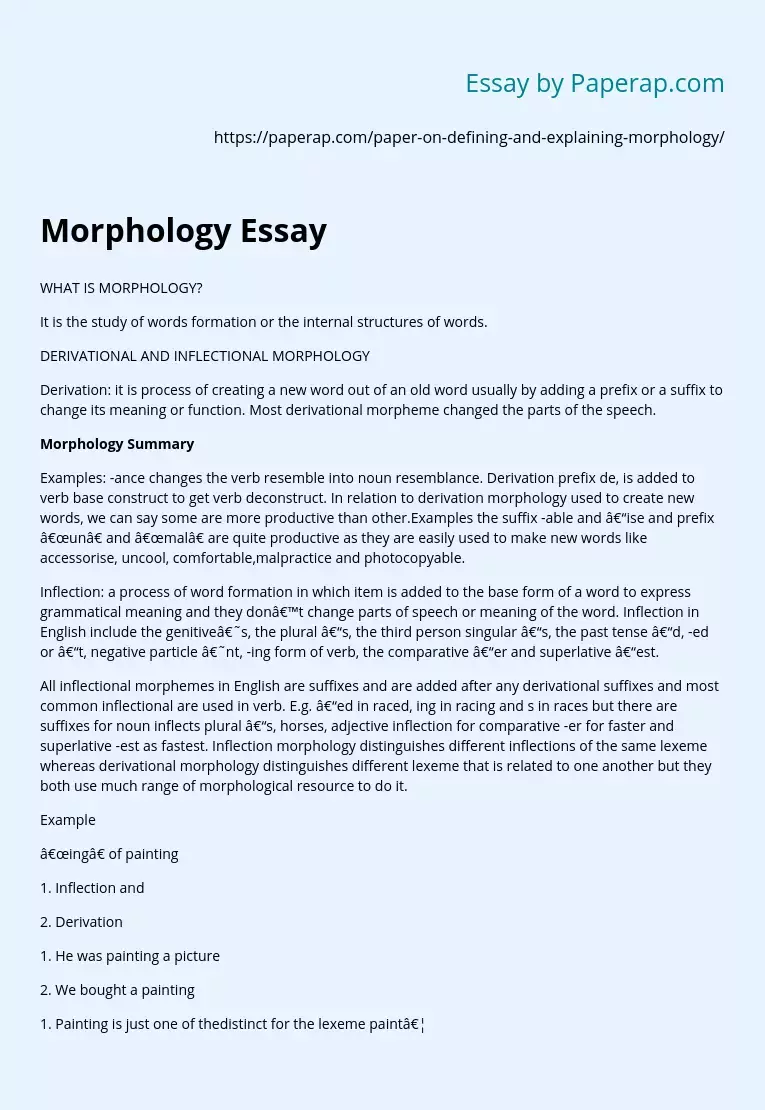Defining and Explaining Morphology
WHAT IS MORPHOLOGY?
It is the study of words formation or the internal structures of words.
DERIVATIONAL AND INFLECTIONAL MORPHOLOGY
Derivation: it is process of creating a new word out of an old word usually by adding a prefix or a suffix to change its meaning or function. Most derivational morpheme changed the parts of the speech.
Morphology Summary
Examples: -ance changes the verb resemble into noun resemblance. Derivation prefix de, is added to verb base construct to get verb deconstruct.
In relation to derivation morphology used to create new words, we can say some are more productive than other.Examples the suffix -able and –ise and prefix “un” and “mal” are quite productive as they are easily used to make new words like accessorise, uncool, comfortable,malpractice and photocopyable.
Inflection: a process of word formation in which item is added to the base form of a word to express grammatical meaning and they don’t change parts of speech or meaning of the word.
Inflection in English include the genitive‘s, the plural –s, the third person singular –s, the past tense –d, -ed or –t, negative particle ‘nt, -ing form of verb, the comparative –er and superlative –est.
All inflectional morphemes in English are suffixes and are added after any derivational suffixes and most common inflectional are used in verb. E.g. –ed in raced, ing in racing and s in races but there are suffixes for noun inflects plural –s, horses, adjective inflection for comparative -er for faster and superlative -est as fastest.
Inflection morphology distinguishes different inflections of the same lexeme whereas derivational morphology distinguishes different lexeme that is related to one another but they both use much range of morphological resource to do it.
Example
“ing” of painting
1. Inflection and
2. Derivation
1. He was painting a picture
2. We bought a painting
1. Painting is just one of thedistinct for the lexeme paint…
Defining and Explaining Morphology. (2019, Dec 05). Retrieved from https://paperap.com/paper-on-defining-and-explaining-morphology/

